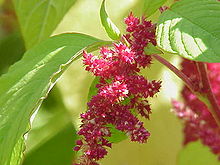 |
| Liz & Partner: Viennese Waltz, Photo: Jen Gross |
Normally, I spend these posts focused on my explorations in art and art therapy. However, behind all of that lies the beauty and wonder of family. Family is my foundation.
This year, in celebration of Mother's Day, I was invited by Claudine Intner, an artist, blogger and mom extraordinaire to join a Mother's Day blog hop. I accepted and chose May 14, my daughter's birthday, as my post date. I couldn't think of a better way of honoring Mother's Day than to write about being Liz's mom.
One of the great delights of my life, Liz came into it twenty two years ago today. A young woman who has faced many challenges, she has overcome them one step at a time.
In fact, Lizzie helped inspire me to become an art therapist. Being with my own daughter, I understood the need to have compassion, to help my child as she met the inevitable challenges of growing up. What an awakening; to discover that no one was going to be a better advocate for her than I. And, it was this same experience of advocacy which spurred me on later, to work with children, who might or might not need an advocate of their own.
 |
| Liz & Partner: Nightclub Two Step, Photo: Jen Gross |
Years have passed since Liz's elementary school days, but at the time, I poured everything that I knew as an artist into my mothering. When school was frustrating, Liz hunkered down at a small table piled with markers and paper and pounded hard on sheet after sheet of paper, producing a series of pointillist mandalas. Later on studying art therapy, I learned the theoretical underpinnings of catharsis but at the time, Lizzie blazed her own art therapy trail.
When she reached high school, and I learned about SoulCollage®, it was Liz who took it to new heights, carrying stacks of 5" x 8" cards and magazines up to her room and emerging several hours later with a fan of cards to share with me. (Before long, she began to assist me during workshops, adding her gentle presence and expertise.)
Together, her cards created the portrait of a passionate and deeply creative woman and I wondered what future form(s) this might take in the world. I didn't have long to wait. During her first year of college, Liz discovered ballroom dance. An incurable romantic, this art form fits her to a T. I've delighted in watching her emerge as a gorgeous woman, who continues to craft her life one step at a time. Today, on her birthday, she is performing with her dance team, "Spirit in Motion" and dancing a solo with her partner. I can't think of a more fitting way for her to enter her 22nd year: in motion.
To see more blogs on the hop, click on any of the links below:
5/1 - Claudine Intner http://www.intner.net/blog 5/2 - Melissa Liban http://melissalibanillustrations.blogspot.com/ 5/3 - Lynn Krawczyk http://fibraartysta.blogspot.com/ 5/4 - Ishita Bandyo http://www.ishitabandyoarts.blogspot.com/ 5/5 - Jeri Greenberg http://www.Jerigreenbergart.blogspot.com 5/6 - Kathleen Mattox http://mixedmessagesbykathleenmattox.blogspot.com/ 5/8- Amanda Ruth http://bunnycarrots.blogspot.com/ 5/9- Judi Hurwitt http://approachable-art.blogspot.com/ 5/10 - Kathleen Murphy http://kathleenmurphydesigns.blogspot.com/ 5/11 - Hannah Phelps http://hannahphelpsgallery.blogspot.com/ 5/12 - Helen Hiebert http://helenhiebertstudio.blogspot.com/ 5/14 - Hannah Klaus Hunter http://hannahklaushunter.blogspot.com/ 5/15 - Claudine Intner http://www.intner.net/blog/










